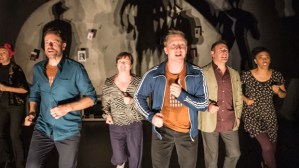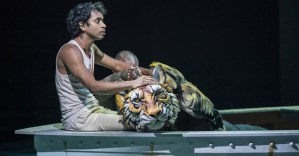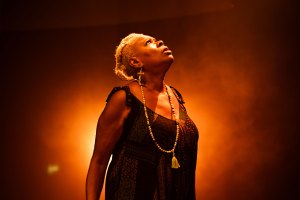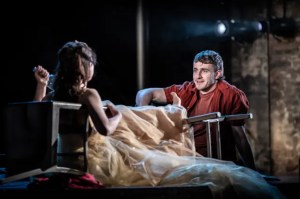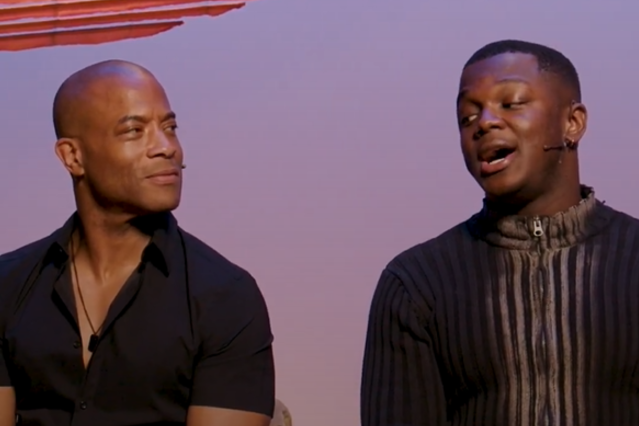Review: Reasons To Stay Alive (Sheffield Theatres and tour)
Matt Haig’s novel is adapted for stage by April De Angelis and embarks on a UK tour, co-produced by Sheffield Theatres and English Touring Theatre

© Johan Persson
Matt Haig first went to the theatre at Sheffield Crucible when area codes didn't have a one in them. Having almost ended his life, he subsequently tried to work his way through his depression. Now an adaptation of his wildly successful book Reasons to Stay Alive premieres at the Crucible Theatre's
studio in a Sheffield Theatres and English Touring Theatre's production, directed by Jonathan Watkins.
From what I've read, the play stays true to the book's timescale and events and we glean an insight into Haig's world. There are two Matts, an older played by Phil Cheadle and a younger by Mike Noble, and its central idea is that the older can ease the younger away from that cliff upon which he teeters at his lowest ebb in Ibiza. Haig wanted to write sections of his book as missives from one to the other and it works here too as an intriguing framing device on stage. The idea the older Matt affirms is that, however much a version of yourself can suffer at one particular time, the capacity to change as a person at a different time does exist.
Scenes centre around young Matt's relationship with his girlfriend Andrea – played by Janet Etuk – and concentrate on the effect depression elicits on others, as well as attesting to the idea that the small activities have a part to play (music, running) as aids in his recovery rather than medication. Haig is a fan of lists and they are used quite humorously to convey the disconnect people on the outskirts of depression have with the illness. A list of things said by the unknowing to people who suffer from depression is revealing, though the chanting at one point of a list of celebrities who suffer didn't fire.
As an autobiographical 75 minute study on depression, it is certainly informative and intriguing, giving insight into the condition. As a dramatic confection it never quite moves or reaches the depths that it might, or as the book seems to have done. Apart from Haig's relationship with his illness and a brief scuffle with girlfriend Andrea, there feels like there needs to be a little more to commit to. This is strange to say in light of smart direction and a performance as good as Noble's, who elicits fitful and disturbing claustrophobia which is sometimes difficult to watch. It is billed as a piece with movement and a section in which old and young Matt gyrate to disco effectively shows how his recovery was incited by giving time to the small pleasures we have at our disposal, but elsewhere, the movement interludes don't chime.
The set design by Simon Daw is a curious amalgamation of an installation, perhaps the inside of a brain, the edge of a cliff, a bed. It twirls and rotates, sometimes opening apart, sometimes closing up. Actors at times scale it, hide behind it or simply ponder on it. They, with the help of Jessica Hung Han Yun's lighting design do some fine work bringing cohesion and flow to nimble scene and character changes.
Following performances at Sheffield Theatres, the production tours to Bristol Old Vic, Lawrence Batley Theatre, Northern Stage, HOME Manchester, York Theatre Royal and Leeds Playhouse until 16 November



